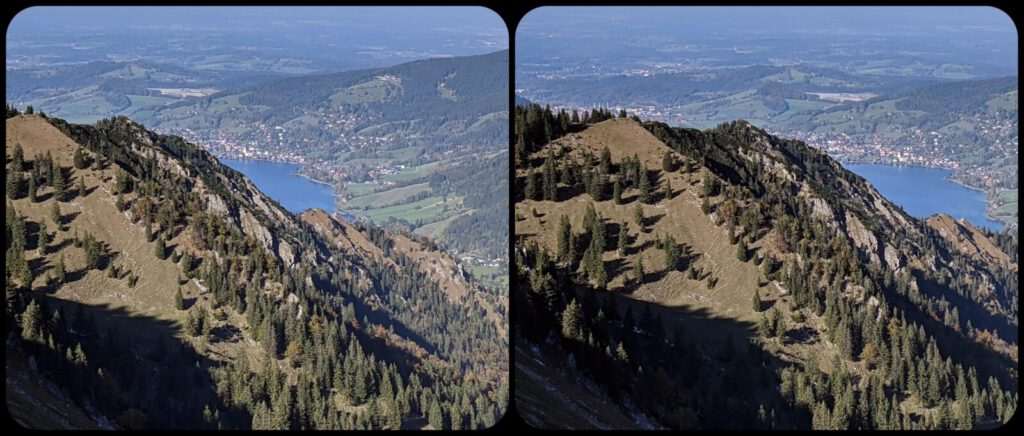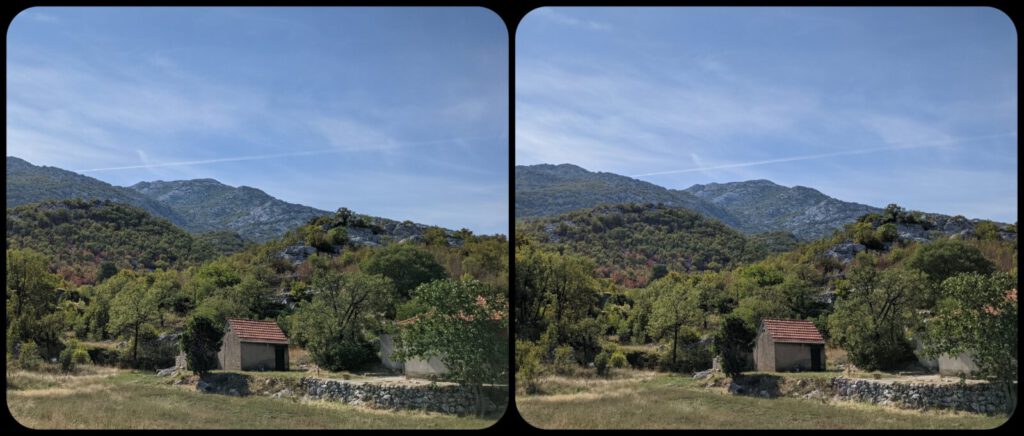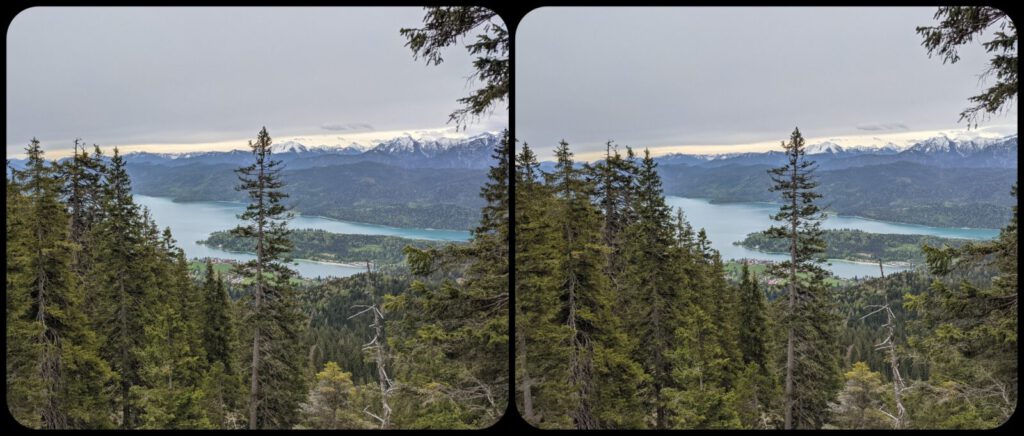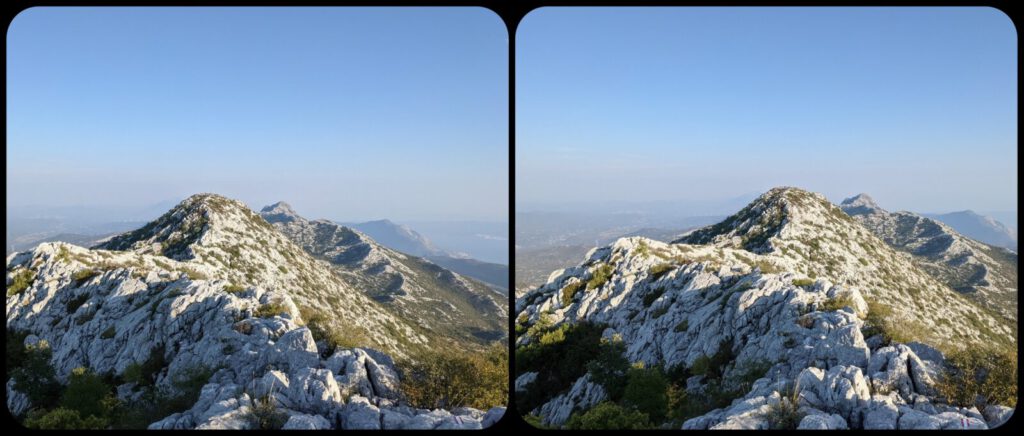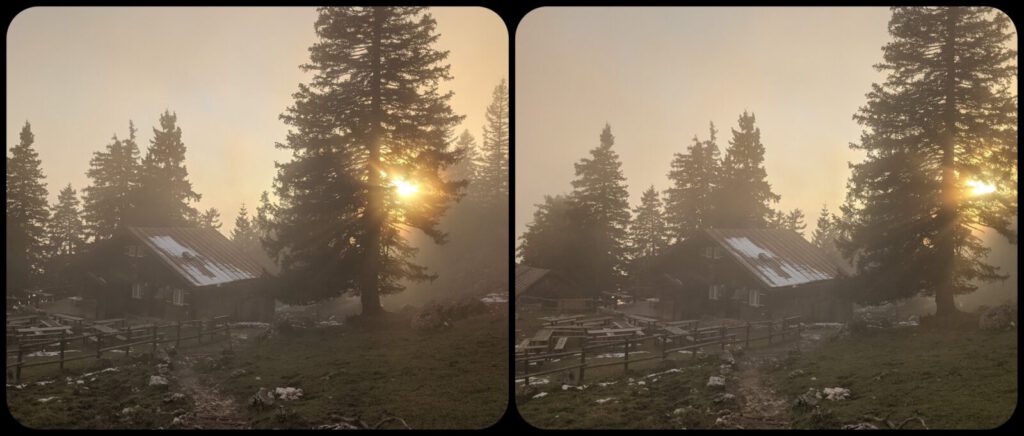The Depth of High Mountains
Hiking offers many opportunities for landscape stereo-photography. Due to the diverse scale of the objects, from small, beautiful flowers, to trees, to entire mountain regions it is possible to take a large variety of stereo-photos. My favourite stereos are the hyperstereos of mountains. But with baselines this large (ranging between 5~100 Metres), there are multiple things (clouds, people and moving shadows, cast by clouds, or even the earth’s rotation) which make this type of stereo-photography challenging. But with some practice a photographer can develop methods to counter these phenomena, and once you do, the results speak for themselves.
Felix Schlicht (München, Germany)
I started taking my own stereoscopic images in mid-2020 when I first discovered that free-viewing stereoscopic images is possible. Since then, with every photo I take I always find an opportunity to take a second photo from a different angle to create a stereo. While hiking I discovered that increasing the distance between the two images makes it possible to see depth even in distant objects like mountains, which otherwise would have appeared flat. I use my Smartphone Camera (Pixel 4a) to take stereos of just about anything, but my preferred stereo subjects are mountains and landscapes.
Instagram-profile: fel.3d

